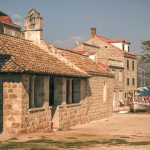ZAGREB, December 6, 2018 – The national power provider HEP is implementing a large-scale investment cycle that includes 3.6 billion kuna worth of investment in revitalising hydropower plants in Croatia, which will contribute to GDP growth, Prime Minister Andrej Plenković said in Ozalj on Thursday at a ceremony marking the launch of power generator B at the Ozalj 1 hydropower plant on the Kupa river.
The new power generator was added to the plant which is marking the 110th anniversary of its existence.
HEP has so far invested 1.4 billion kuna and will invest an additional 2.2 billion kuna over the next 10 years, the prime minister said at the ceremony in Ozalj, 50 kilometres south of Zagreb.
Plenković said that the upgrade work on this power plant was worth 60 million kuna and would prolong the plant’s working life.
“Croatia wants to strengthen its hydropower capacity and continue this trend in the coming years, which is also excellent on the European level. We have already met the EU target for 2030 regarding energy from renewable sources,” the prime minister said.
In 2014, EU member states agreed on a new renewable energy target of at least 27% of the EU’s final energy consumption by 2030, as part of the EU’s energy and climate goals for 2030.
Speaking of HEP’s investment cycle and its contribution to national economic growth, Plenković said that when it came to “the strategic triangle: fiscal consolidation, structural reforms and investment, emphasis should be put on investment as the driver of growth and development and eventually employment.”
HEP management board chairman Frano Barbarić said that the company would further develop itself in the production of electricity from renewables.
He recalled the company’s project of the construction of a solar power station on the northern Adriatic island of Cres, the first in a series of planned power plants to run on solar power and other renewables.
At a contract-signing ceremony on Cres in late June, Brbarić said then that by 2050 HEP would produce 70% of electricity from renewable resources.
The power plant will be built on an area of 17 hectares and will have a capacity of 6.5 megawatts. That is 6.5 times more than the largest existing plant of this type in the country. It will produce an average of 8.5 million kilowatt hours a year, which is approximately the consumption of 2,000 households.
For more on renewable sources of energy in Croatia, click here.








